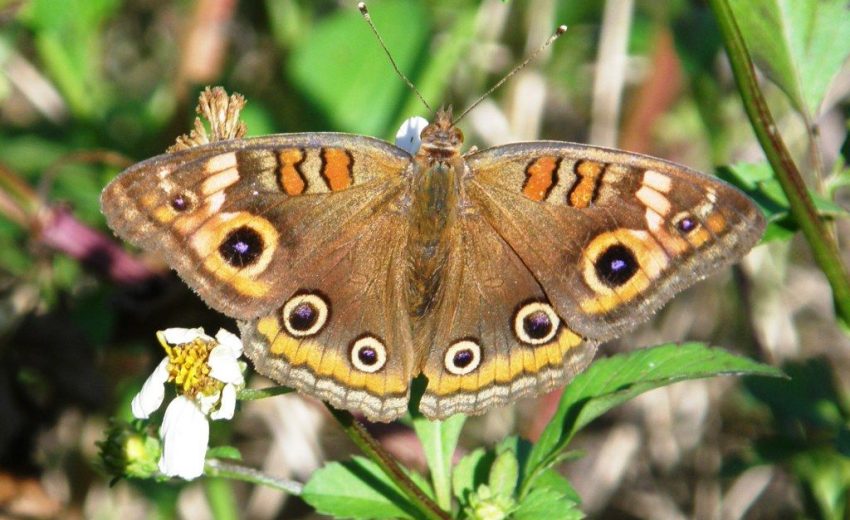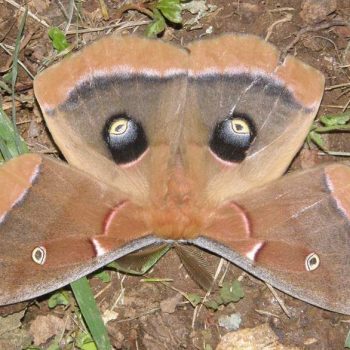
- Buckeye on mangrove
- Pearly eye northern
- Male polyphemus moth
- Polyphemus moth eye spot
- Gulf fritillary butterfly
- Common Wood nymph mating
- Butterfly owl
The wood nymph butterfly is very cryptic when the wings are closed despite the presence of a few rather inconspicuous spots on the outside of the wings. But there are two dark eye spots with white centers surrounded by a light background on the outer forewing which can be flashed as the wings are rotated. This suggests a two part strategy- remain hidden if possible but then show startling eye spots if a predator detects you.
The buckeye butterflies have a series of eyespots on the insides of the fore and hind wings which are often displayed as the insect holds the wings open to bask. These are believed to direct the attacks of birds away from the more vulnerable body. This is a photo of a mangrove buckeye from Florida which has a much smaller eye spot in the hindwing than the much more widespread common buckeye. Since the mangrove species originated from the common buckeye, a decrease in size of the large eyespot may indicate a difference in predation pressure, and illustrate how this pattern can change.
The pearly-eye butterflies found all the way from Canada to Florida are almost indistinguishable except for the color of the antennae. This photo was taken on our Virginia farm and is the northern pearly-eye that shows a wonderful series of eye spots on the outside of the wings. This raises an interesting point- that in some species the eye spots are on the inside of the wings and in others on the outside. So although it would appear that the pearly-eye is making no attempt to camouflage itself, the overall coloration effect is not so obvious as a large eye spot would be.
A tropical owl butterfly (Caligo) that I photographed in a butterfly exhibit shows a different approach with a very large eye spot on each hind wing. The polyphemus moth similarly has a very well developed set of eye spots on the inside of the hind wings which are flashed when the moth is disturbed. Otherwise it is well hidden in most backgrounds. There is remarkable detail in the coloration of the eye spot as shown in an enlargement- this also reveals that the design is made up of small scales. The double set of eye spots allows the polyphemus to present a very realistic design of scary eyes to a potential predator. Of course any bird that would be frightened by such a simple model (eye spots on the wings of a tasty moth) is revealing the limited extent to which intelligent choice is being applied to selection of food. Although predatory birds, lizards and frogs are clearly not in the genius category, they may also have good reasons to be very conservative in choosing prey that might hurt them.
So enjoy the designs that nature presents to us on the wings of butterflies and moths for their intrinsic beauty, or delve more deeply into the evolutionary consequences of such designs. Either way I am sure you will find much to appreciate.
Bill Dunson, Englewood, FL & Galax, VA
wdunson@comcast.net







